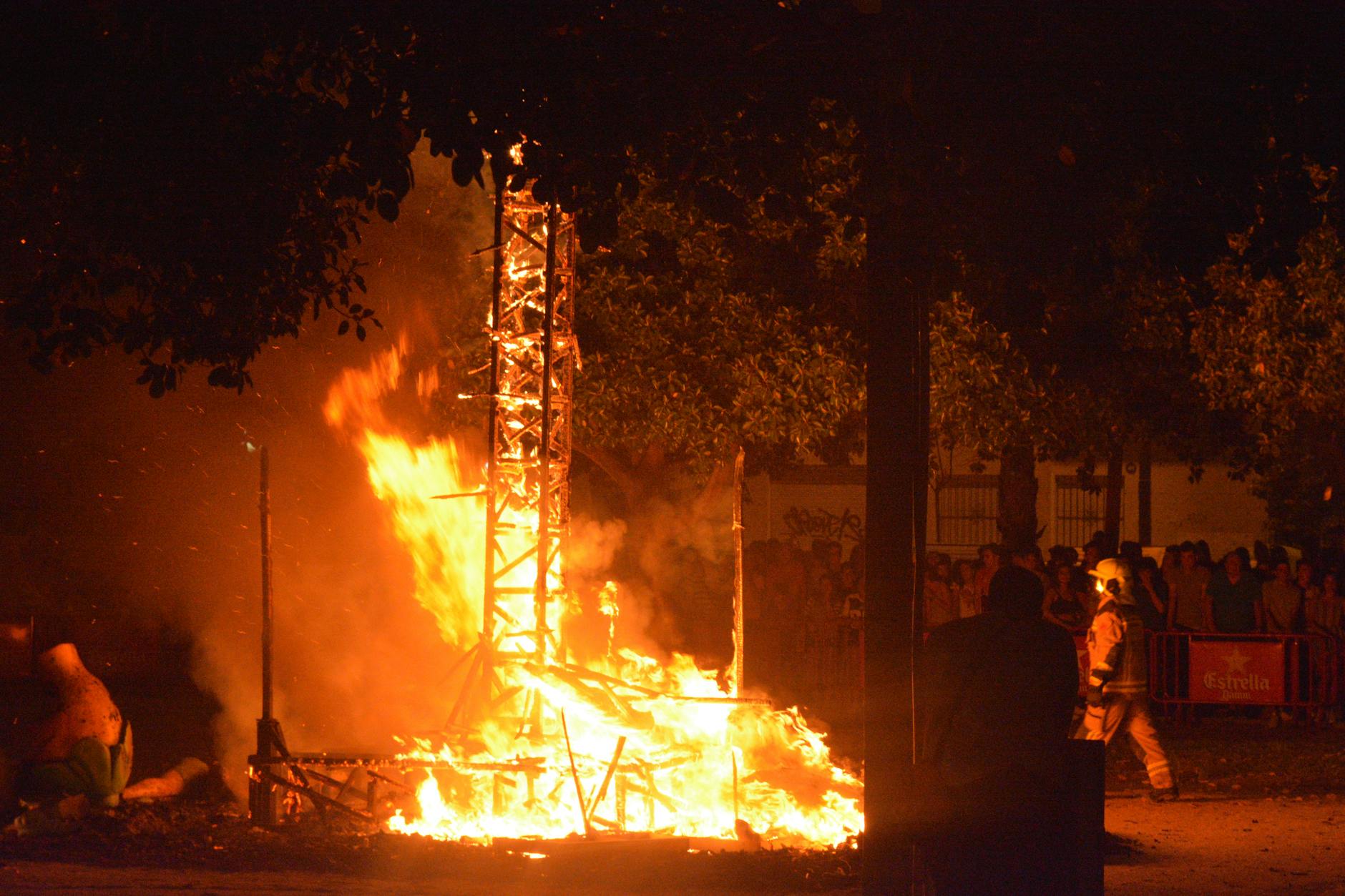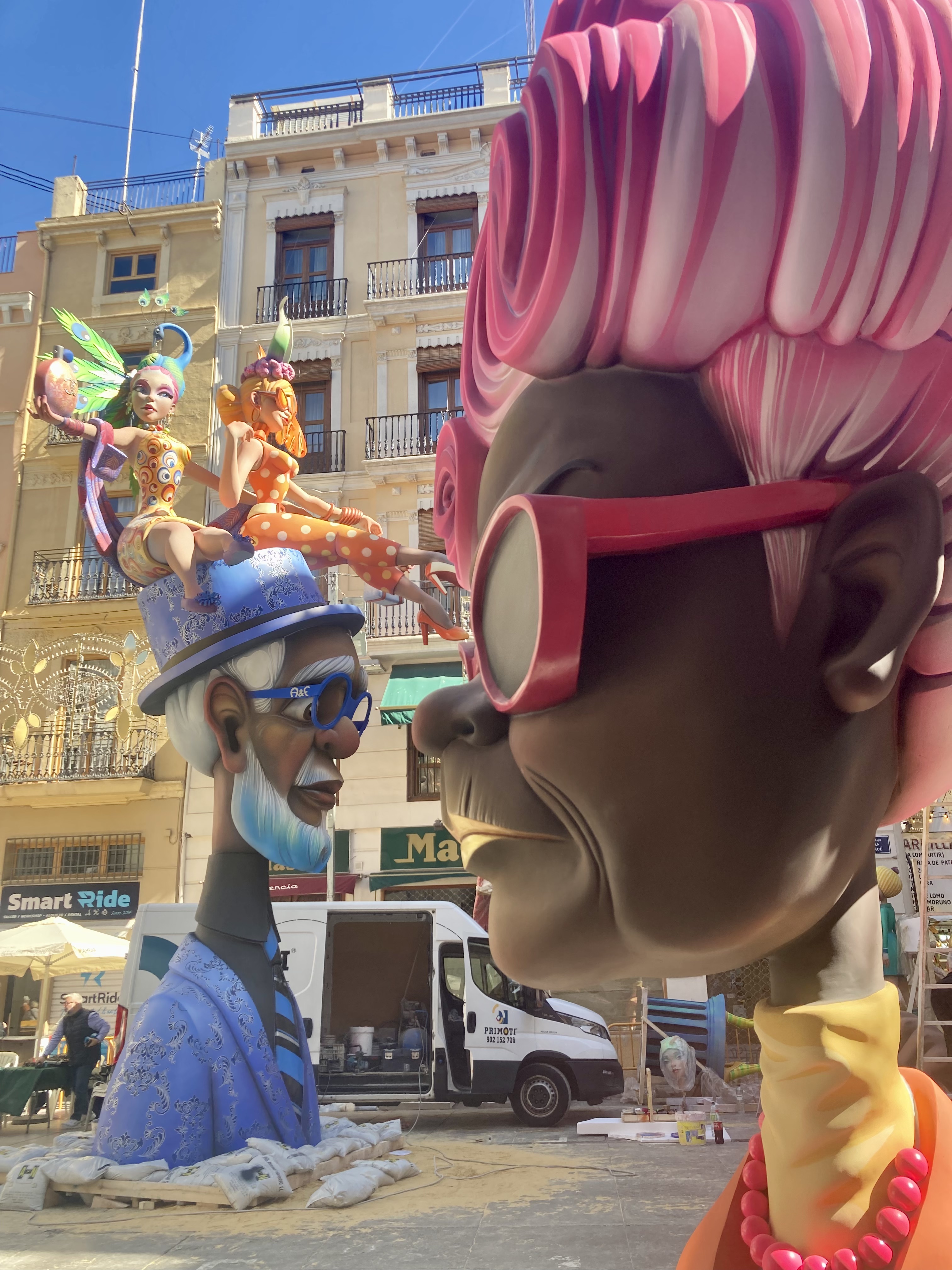The Origins of La Cremà
The tradition of burning Fallas monuments dates back centuries. The first documented Cremà occurred in 1751, but bonfires celebrating Saint Joseph’s Day on March 19 have been part of Valencian culture since at least the 13th and 14th centuries. These fires historically symbolized the end of winter and the arrival of spring, marking the vernal equinox (El Nacional).
By the 18th century, city ordinances began regulating fire-related traditions, restricting bonfires to designated plazas and squares. Over time, these regulations helped shape the organized, large-scale celebration of fire that Fallas is known for today.
The Parade of Fire: A Fiery Prelude
One of the most striking additions to Fallas was the Cabalgata del Fuego (Parade of Fire), introduced in 1932. Initially intended to kick off the festival, it was later moved to the final day, serving as the lead-up to La Cremà. This visually stunning event features fire-breathing demons, flaming beasts, and traditional falleros and falleras marching from the city center to Puerta de la Mar. The parade sets the stage for the night’s fiery spectacle.
How La Cremà Unfolds
Setting the Fallas monuments alight is no simple task. With more than 300 fire crews on standby, strict safety protocols ensure that each burning is carefully controlled. Every neighborhood Falla commission is responsible for the safe burning of its monument, ensuring that spectators remain at a safe distance. Before ignition, the structures are typically doused with accelerants to help them burn efficiently. The honor of lighting the fire falls to the Fallera Mayor, who does so from a safe distance — accompanied, of course, by plenty of fireworks (Distrito Fallas).
The timeline of La Cremà follows a structured schedule:
- 8:00 PM – The children’s monuments (fallas infantiles) are burned first.
- 10:00–10:30 PM – The larger Fallas monuments begin to be set alight.
- 11:00 PM – The grand finale: the Plaza del Ayuntamiento Fallas monument is burned under a sky filled with fireworks. A Punt and other local media broadcast the event live, providing minute-by-minute coverage.
For many, this is an overwhelming moment. The sight of the flames consuming months of craftsmanship can be deeply emotional, and it is common to see falleras sobbing as the fire reduces their monuments to ashes.
The Aftermath: A City Reborn
Perhaps the most remarkable aspect of La Cremà is the aftermath. Within hours, Valencia’s cleanup crews get to work. By dawn, ashes and cinders have been swept away, and the city is restored to normal, marking the official end of Fallas.
If you plan to attend La Cremà, be prepared for large crowds, particularly at Plaza del Ayuntamiento, where the biggest bonfire takes place. The Parade of Fire begins around 7:00 PM, starting at Calle Poeta Querol and making its way along Calle de la Paz to Puerta de la Mar. Whether you watch from the heart of the city or from a neighborhood falla, witnessing La Cremà is an unforgettable experience — one that embodies the enduring spirit of Valencia.



